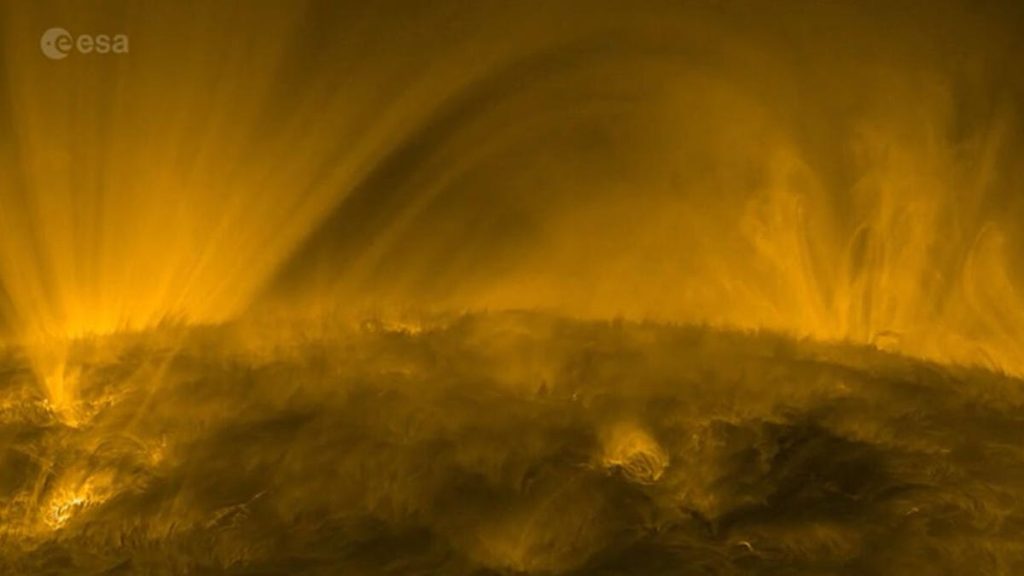The European Science Agency recently released a video of the sun’s corona, captured by the solar orbiter on September 23, 2023. The video provides a close-up look at various phenomena such as coronal moss, spicules, and coronal rain. The annotations in the video offer viewers additional context about what they are seeing, including the heights of gas spires reaching up to 10,000 kilometers. The footage also captures a small eruption that was larger than Earth, showcasing the dynamic and powerful nature of the sun’s atmosphere.
The video, which showcases some of the best footage of the sun ever captured by humans, was taken by the ESA’s solar orbiter and its extreme ultraviolet imager. Launched as part of a mission to capture unprecedented close-up images of the sun, the solar orbiter has provided stunning visuals of solar phenomena since its launch in 2020. Notable footage includes a massive solar eruption extending millions of kilometers into space, as well as a mesmerizing snake-like effect caused by the intermingling of plasma and the sun’s magnetic field. These images offer valuable insights into the sun’s behavior and composition.
In addition to breathtaking visuals, the ESA’s solar orbiter mission has yielded groundbreaking scientific data about the sun. For the first time, close-up images of the sun’s polar regions have been captured, providing valuable insights into the sun’s behavior at different latitudes. Furthermore, measurements of the sun’s solar winds, previously impossible to obtain from Earth, have been collected as part of the mission. These data contribute to a better understanding of solar dynamics and the impact of solar activity on our planet.
The significance of the solar orbiter mission extends beyond just visuals and scientific data. By capturing unprecedented images and footage of the sun, the mission contributes to our collective knowledge of our closest star. The extreme ultraviolet imager has allowed scientists to study solar phenomena in ways never before possible, shedding light on the intricate processes that govern the sun’s behavior. This enhanced understanding of the sun has implications for space weather forecasting, satellite communications, and our overall understanding of the universe.
Looking ahead, the ESA’s solar orbiter mission holds promise for even more discoveries and insights into the sun’s behavior. With ongoing data collection and analysis, scientists are poised to uncover more mysteries of the sun and its impact on our solar system. As technology advances and mission capabilities grow, we can expect to see even more remarkable images and footage of the sun’s corona and other phenomena. The solar orbiter mission represents a groundbreaking endeavor in solar exploration, offering a glimpse into the dynamic and complex nature of our nearest star.
In conclusion, the ESA’s solar orbiter mission continues to provide groundbreaking images and data about the sun, enhancing our understanding of this crucial celestial body. The recent video of the sun’s corona offers a mesmerizing glimpse into the sun’s atmospheric phenomena, showcasing the beauty and power of our nearest star. As the mission progresses, we can anticipate further discoveries and insights into the sun’s behavior, contributing to advancements in space science and our understanding of the universe. The solar orbiter mission stands as a testament to human ingenuity and curiosity, driving us to explore and comprehend the mysteries of the cosmos.


